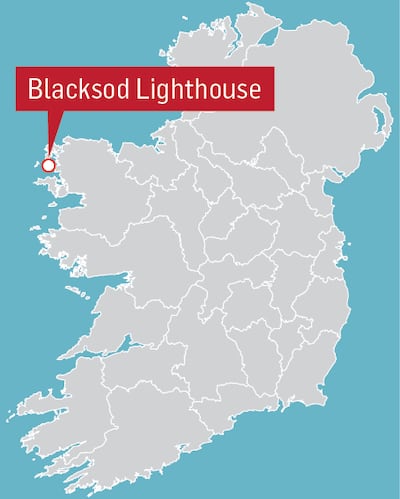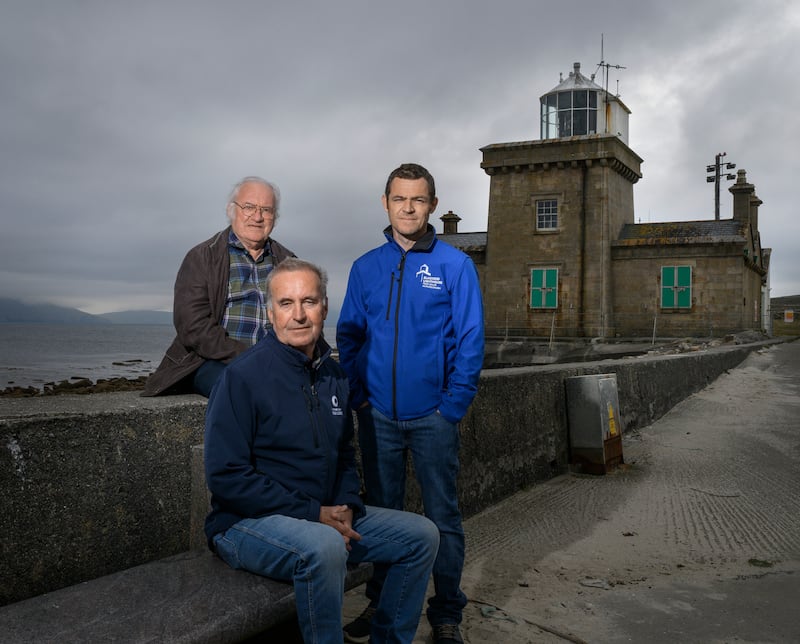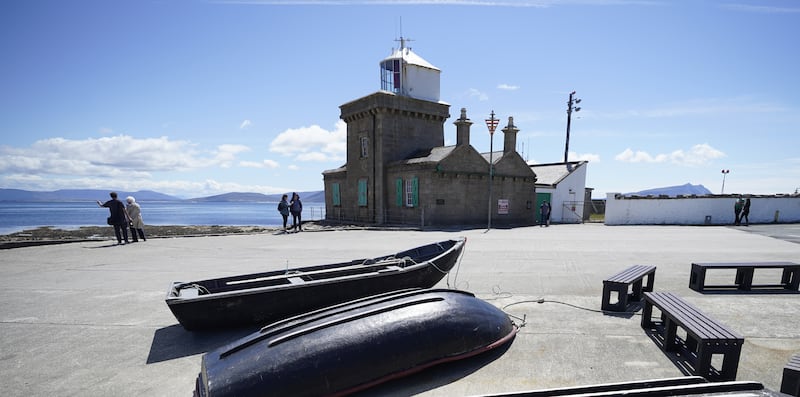For centuries, Ireland’s lighthouses have stood strong against raging storms, offering a beacon of hope for sea travellers and carrying a strange fascination for those on land. In a new series, The Irish Times visited some of Ireland’s most notable lighthouses, including Blacksod, Fanad, Ballycotton, Hook, and Wicklow Head, to learn about their fascinating histories and how their roles have changed in the modern era.
Framed by the squat, square and corbelled Blacksod lighthouse, it is a grey and windswept summer’s day at the southern tip of one of the country’s most remote peninsulas in Co Mayo.
Its pink granite stone, hewed from a nearby quarry, was also used in the building of the Houses of Parliament in London. Like the rosary of more typical round-tower edifices, whose illuminations have guided sailors to safety from the whims of the seas and oceans of our island nation, this mainland lighthouse is actually one of four along this 33km stretch of coastline in Erris called the Mullet peninsula.
Blacksod and Ballyglass, on the northern tip of the peninsula, are on the mainland. With the offshore lighthouses on Blackrock and Eagle islands, they combine to provide guidance to ships and seafarers on the dangers of the islands of the Inishkeas, Duvillaun and the Stags of Broadhaven.
Like many other lighthouses, Blacksod is the repository of a cross-generational family story, in this case that of the Sweeneys.
These days, it is a third generation member, Fergus Sweeney, who regales visitors about stories of this working lighthouse, which was built in 1864 for £2,440, to complement the offshore Blackrock Lighthouse.
Of course it was his late granny Maureen who ensured this lighthouse’s international renown, after her weather report warning of strong winds on June 5th, 1944, changed the course of the second World War and ensured the success of the D-Day landings on the beaches of Normandy a day later than planned by the Allied Forces, on June 6th.
“My grandad Ted was the lighthouse keeper at the time and Maureen, my granny, was an assistant in the village post office run by my great-grandmother. She had travelled from the village of Knockanure, in Co Kerry, for three days in answer to an advertisement for an assistant in the post office and weather station,” Sweeney explains.

Maureen and Ted got married in 1946 and she then moved into the lighthouse where they raised their four children, three of whom, the boys, would become involved with the lighthouse service. Indeed, Fergus’s father Gerry and uncle Vincent are still the Blacksod lighthouse attendants to this day. In the early days, Gerry Sweeney worked on lighthouses around the coast from Slyne Head in Co Galway to northern Donegal.
“My parents actually met when dad was stationed at the lighthouse on Tory Island and they lived there for nine years. Mam was the island’s district nurse and had come from Manorhamilton. I was born in Sligo but my first journey, when I was a few days old, was by helicopter from the hospital back to Tory,” says Fergus.
Eventually, Gerry was stationed back home on Eagle Island and the family set up home in Blacksod, while Vincent and his family continued to live in the lighthouse until 1991.
For the last five years, Fergus has led tours of the lighthouse with two other guides. The project is funded by Comharchumann Forbartha Ionad Deirbhle and the Great Lighthouses of Ireland, and includes two gallery rooms telling the story of Blacksod and the other nearby lighthouses.
Guide Kathleen Geraghty is on duty when The Irish Times visits and she reveals that, as well as Irish families, there are many visitors from the UK, Germany and the United States.

“There is huge interest in Maureen’s weather report and how it changed D-Day,” she says. “On one tour I noticed a woman listening intently, and at the end she said her grandfather had been in Normandy and she believed he had been saved because of the forecast from here.”
As we continue up to the light-room, Fergus explains: “Everything here that is not electrical is original: the glass, the lens, the pans overhead were used to collect condensation, because this was a fixed light initially which was originally lit by paraffin and converted to gas in 1931. Today the light is powered by batteries.”
Down below, the summer sea hisses and froths, its elemental power still clear from the ravaged remains of the preflight and radio rooms which were washed away after the storm of 1991 knocked down a sea wall.
Significantly, Blacksod lighthouse, with its adjacent working pier and two helipads, is an important refuelling depot under the remit of the Department of the Marine and Irish Lights.
[ The view from Fanad Lighthouse fills us with a sense of our own mortalityOpens in new window ]
It was to this helipad that the tragic Rescue 116 helicopter was flying to refuel when it crashed in March 2017 at Blackrock island, with the loss of four lives.

The importance of Blacksod lighthouse as both “a navigational aid and a search and rescue base” is not lost on Gerry.
“The choppers come in here regularly, refuel and go out into the Atlantic to take a casualty off a fishing boat or a merchant ship. If there is an emergency locally, a car crash, a stroke, or somebody getting an organ donation, the helicopter will lift them from here and bring them to Dublin, as we are an hour and a half from the hospital in Castlebar,” he says.
[ In pictures: Wicklow lighthouse shines once again after almost 50 yearsOpens in new window ]
Gerry was the keeper on Eagle Island in 1986 when Hurricane Charlie hit. “That was the worst night I ever spent in the lighthouse. It was Force 12 winds and mountainous seas coming over the island. I am not talking about white waves, I’m talking about solid green water which smashed the glass into smithereens.”
- Sign up for push alerts and have the best news, analysis and comment delivered directly to your phone
- Join The Irish Times on WhatsApp and stay up to date
- Listen to our Inside Politics podcast for the best political chat and analysis















